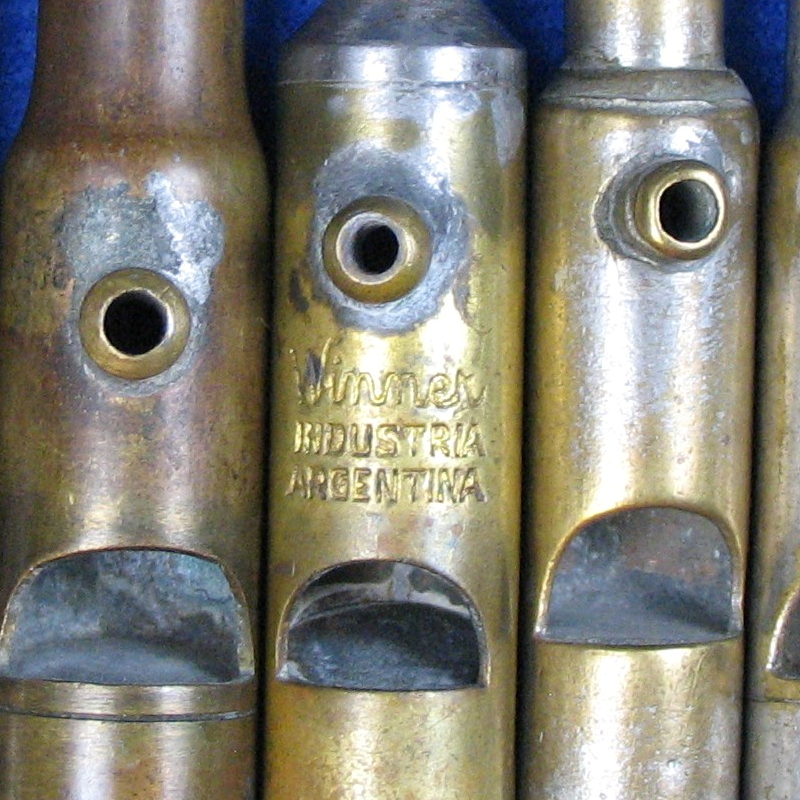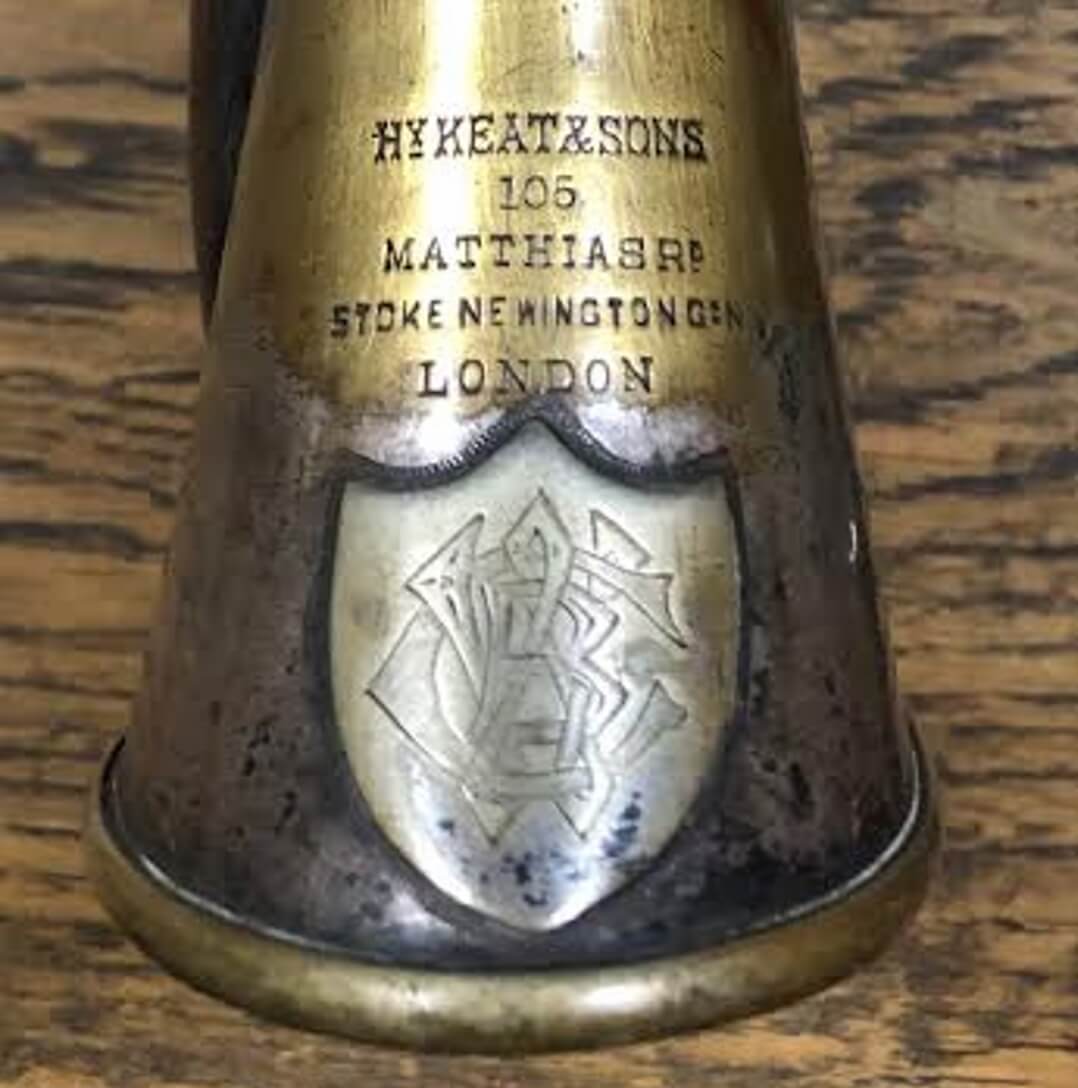Home > Whistle Books, Catalogs & Collections > Whistle Books > More Whistles by Martyn Gilchrist
Third book in his trifecta, More Whistles by Martyn Gilchrist, is spiral bound to keep the cost down. Learn how to identify and classify your whistles.

Gilchrist, Martyn. More Whistles. Wincanton, UK: Salisbury, 2005. Print.
OUT OF PRINT
An Excerpt from the Introduction
A whistle is classed as an aerophone, whish is an instrument in whish sound is produced by vibrating air. The breath is directed at a sharp edge which sets the air in motion. The length of the whistle’s body governs the pitch and its shape the character of the sound.
Here is twice the information found in Whistles by Martyn Gilchrist, and the third book goes much further into categories such as beauforts, rounds, and general service whistles. Beyond that it is Martyn’s best effort on escargot whistles and their classification. The last part has two full pages on sirens made by Hudson, with dating and identification notes along with pictures of the varying parts.
More Whistles by Martyn Gilchrist, pages 58-50 have two excellent pages on the internal parts and dating of general service (or tube shaped) whistles by Hudson that gives you a bench mark for identifying other manufacturers.
There is a dedicated section for “The manufacturers” for readers to become familiar with whistle makers from the 1860s – 1930s and how to identify those related to specific whistle manufacture. Additionally, a “Glossary & trademarks” for definitions ranging from whistle parts to types of whistles.
More Whistles by Martyn Gilchrist | About the Book:
Whistles have been a part of life for many people. They were at one time a common way of communication at a distance, as well as an alarm and cry for succour. They have been used by, of example, referees to signal a decision, to command soldiers into battle, by shepherds to control dogs, to hail taxicabs and to direct trains to start their journeys. The police and fire services have used them to signal for assistance and to conduct operations, and they have been issued to staff at mental asylums. Whistles fall into many collecting areas and it is a subject in its own right. During the ‘Golden Age’ of whistle making, 1860s to the 1930s, and afterwards, many different patterns were produced which now presents to the enthusiast rich fields to explore. Collectors can still find a considerable number of antique (over hundred years old) calls and a wealth of interesting items from then up to the present time. This book examines the major types, including a far-reaching chapter on escargot whistles, the preferred pattern of referees and railway guards. Many whistle collectors have an interest in sirens and information is given here on various models and their dating.
More Whistles by Martyn Gilchrist | About Martyn:
This is Martyn Gilchrist’s thrid book on whistles. He is probably the foremost expert in the field and has appeared in television and on the radio. Formerly an editor, crossword and puzzle compiler, book indexer and studio potter, he is now retired and lives in Somerset.
You will indeed spend hours digesting this reference work, reading, highlighting and rereading More Whistles by Martyn Gilchrist!
While currently OUT OF PRINT, the team at The Whistle Gallery offers remaining copies for purchase.






